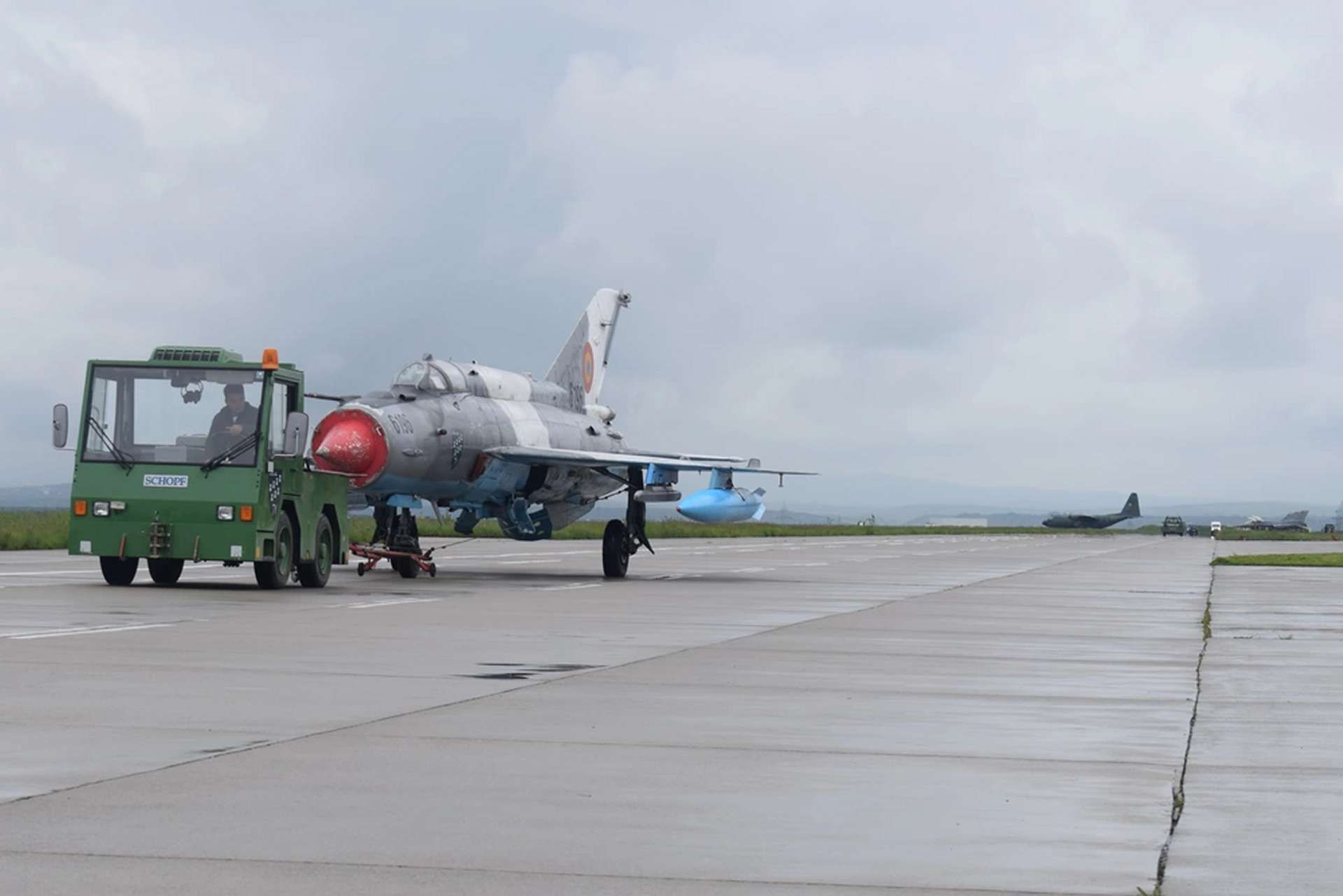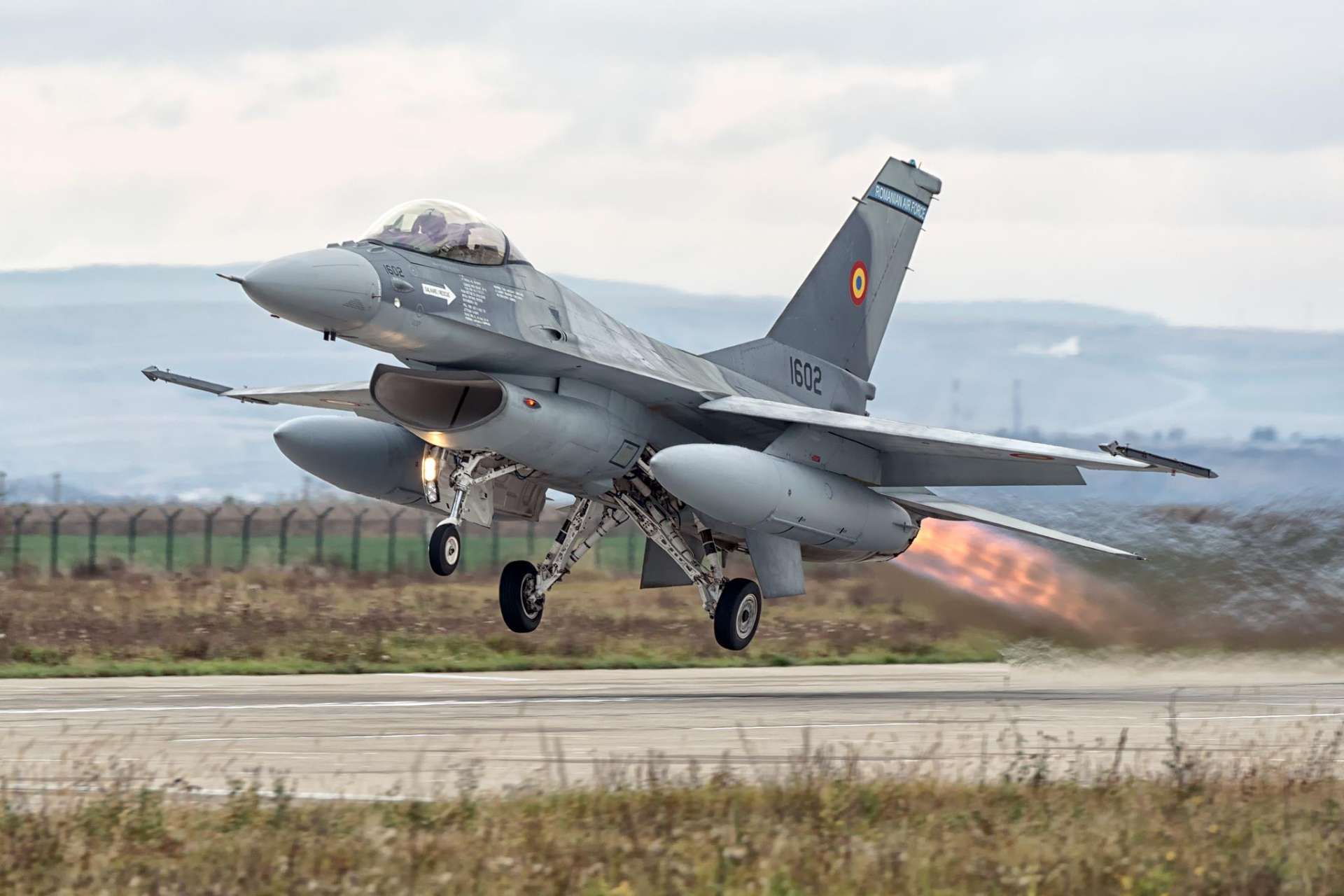Breaking News
Romania to buy 32 F-35A stealth fighters for $6.5 Billion with more planned.
On August 28, 2024, the Romanian Ministry of Defense released a draft law proposing the purchase of 32 F-35A stealth fighters through the Foreign Military Sales (FMS) program, a government-to-government agreement facilitated by the U.S. Department of Defense. This proposed acquisition, estimated at $6.5 billion, would represent Romania's largest military purchase since 1989. This program is viewed by Romania as a crucial step in strengthening the country's defense capabilities as a NATO member, with additional aircraft purchases anticipated after 2024.
Follow Army Recognition on Google News at this link

The proposed acquisition of 32 F-35A stealth fighters, estimated at $6.5 billion, would represent Romania's largest military purchase since 1989. (Picture source: US DoD)
In recent years, Romania has actively strengthened its military infrastructure, including hosting NATO radar systems near the Black Sea to monitor regional developments. Amid these efforts, Romanian defense officials have voiced concerns over the potential escalation with Russia, underlining the need for preparedness in case of further Russian advances into Ukraine. Additionally, the country faces domestic political uncertainty ahead of the 2024 elections, where a possible rise in far-right influence could affect its policies within the European Union.
Complicating the situation further are the tensions in Transnistria, a pro-Russian region in Moldova. Any destabilization there could have significant spillover effects, especially if Russian forces attempt to expand their influence or strategically use the region to pressure Ukraine from the southwest.
Given this situation, Romania's current air defense strategy involves conducting continuous missions under NATO command, utilizing several squadrons of F-16 aircraft acquired from Portugal, the United States, and Norway. However, these F-16s are viewed only as a medium-term solution due to their limited operational capabilities in the face of advancing fifth-generation aircraft technology. The existing F-16 fleet is slated for gradual retirement between 2034 and 2040, following the recent phasing out of the MiG-21 LanceR aircraft.

The existing F-16 fleet is slated for gradual retirement between 2034 and 2040, following the recent phasing out of the MiG-21 LanceR interceptor. (Picture source: US DoD)
By that time, Romania intends to rely primarily on the F-35s acquired in this initial phase, with further aircraft purchases expected after 2024. This approach aims to provide a long-term solution for defending Romanian airspace and ensuring full integration within the NATO Integrated Air and Missile Defense System (NATINAMDS).
The acquisition process for the F-35 began in 2019, when Romania sent a Letter of Request (LOR) for Price and Availability to the U.S. government, aiming to gather necessary information for future planning under the FMS program. At the same time, Romania has been working to phase out its aging MiG-21 LanceR aircraft in favor of the F-16s, a transition approved by the Supreme Defense Council in 2022. To further enhance its defense capabilities, in April 2023, the Council approved the “Concept for Realizing the Operational Capability for Air Defense with Fifth-Generation Multi-Role Aircraft,” which outlines the requirements needed to fulfill Romania's security objectives as specified in its National Defense Strategy and Military Strategy.
Progress in this acquisition effort continued with a revision of the concept study for the F-35 in August 2023, followed by the approval of the Operational Requirements Document by the Air Force's operational requirements committee in September 2023. Subsequently, in October 2023, the Romanian Parliament authorized the Ministry of Defense to proceed with procuring 32 F-35A aircraft under the FMS program. To formalize this decision, a Letter of Offer and Acceptance (LOA) was submitted to the U.S. Department of Defense in November 2023, securing the basic package associated with the F-35 acquisition.

Romania's current air defense strategy involves conducting continuous missions under NATO command, utilizing several squadrons of F-16 aircraft acquired from Portugal, the United States, and Norway. (Picture source: Liviu Dnistran)
Looking ahead, the first batch of F-35 aircraft is expected to arrive in Romania after 2030. The plan is to fully integrate these jets into the country's air force, aligning with NATO’s expected adoption of the F-35 as the standard fifth-generation fighter jet. To address the anticipated shortage of trained pilots for the new fleet, Romania has joined the Euro-NATO Joint Jet Pilot Training (ENJJPT) and NATO Flight Training Europe (NFTE) programs.
These initiatives provide valuable training opportunities alongside pilots from other NATO member states and will supplement Romania's existing training resources, including programs in the United States. Romania has been a member of the ENJJPT program since 2017 and joined the NFTE program in 2021, while continuing to participate in U.S. training programs through the Air Force Security Assistance Training Squadron (AFSAT).
To support the acquisition process, the draft law also introduces specific financial provisions. It proposes exemptions from penalties and interest for payment delays related to customs value adjustments, in line with U.S. legislation governing FMS contracts. Additionally, it allows the Ministry of Defense to manage foreign currency accounts with the Federal Reserve Bank of New York to facilitate the procurement of goods and services under the FMS program.

The plan is to fully integrate these jets into the country's air force, aligning with NATO’s expected adoption of the F-35 as the standard fifth-generation fighter jet. (Picture source: US DoD)
The estimated cost for the initial acquisition phase is approximately $6.5 billion, excluding VAT, with final costs to be negotiated with the U.S. government. Notably, personnel expenses are expected to be covered within the existing annual budget allocations, requiring no additional funding.
Furthermore, to retain specialized personnel crucial for the F-35 program, the legislation includes financial incentives, such as a salary bonus of up to 50% for those managing and executing the program. These measures aim to maintain adequate staffing levels and prevent resignations that could undermine Romania's ability to meet its defense commitments. Drawing on precedents set by previous defense acquisitions, such as the procurement of Bayraktar TB2 drones, the draft also provides for expenses related to the deployment of Ministry of Defense personnel and their families for missions abroad.
The F-35A Lightning II, an American fifth-generation stealth multirole fighter produced by Lockheed Martin, is powered by a Pratt & Whitney F135-PW-100 afterburning turbofan engine. This engine delivers a maximum thrust of 190 kN and a thrust-to-weight ratio of 11.47:1 when using the afterburner, enabling the aircraft to reach speeds up to Mach 1.6 (1,930 km/h) and providing a combat radius of approximately 1,135 km on internal fuel. Designed for maneuverability, the F-35A features a maximum g-force limit of 9g and enhanced aerodynamic control through its Electro-Hydrostatic Actuation System (EHAS), which powers both primary and secondary flight surfaces.

The F-35A Lightning II is powered by a Pratt & Whitney F135-PW-100 afterburning turbofan engine that delivers a maximum thrust of 190 kN and a thrust-to-weight ratio of 11.47:1 when using the afterburner, enabling the aircraft to reach speeds up to Mach 1.6. (Picture source: US DoD)
Equipped with an advanced suite of sensors and avionics, the F-35A includes the AN/APG-81 Active Electronically Scanned Array (AESA) radar, supporting both air-to-air and air-to-ground modes, such as high-resolution mapping and combat identification. Its Electro-Optical Targeting System (EOTS) integrates targeting capabilities with minimal impact on radar cross-section, while the AN/AAQ-37 Distributed Aperture System (DAS) offers 360-degree situational awareness, capable of detecting missile launches from distances up to 1,900 km.
The aircraft's communication systems feature the Multifunction Advanced Data Link (MADL), enabling secure, low-observable communication with other platforms. Meanwhile, the Panoramic Cockpit Display (PCD) and Helmet Mounted Display System (HMDS) provide pilots with a comprehensive digital view of the battlespace, integrating real-time data from various sensors both on and off the aircraft.
In terms of armament, the F-35A is equipped with an internal GAU-22/A 25mm four-barrel rotary cannon and can carry up to 8,165 kg of munitions across 10 weapon stations, including both internal and external hardpoints. Internally, it can be armed with AIM-120 AMRAAM air-to-air missiles, GBU-31 JDAM GPS-guided bombs, and GBU-12 laser-guided bombs. Externally, it can support additional air-to-air missiles, such as AIM-9X Sidewinders, and various air-to-ground munitions.
While the aircraft maintains its stealth profile with only internal bays loaded, it can also operate in a "beast mode" configuration, carrying maximum ordnance for non-stealth missions. This versatile weaponry, combined with its advanced sensor fusion systems, allows the F-35A to excel across multiple mission types, from air superiority and close air support to strategic bombing.


























